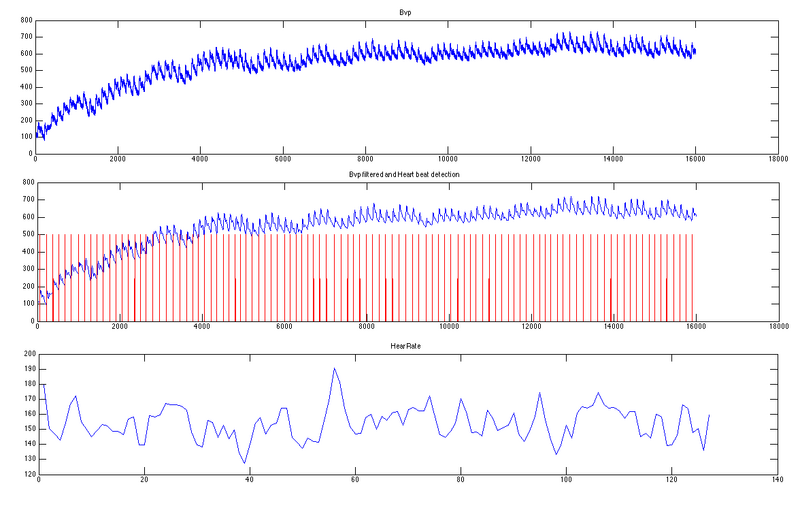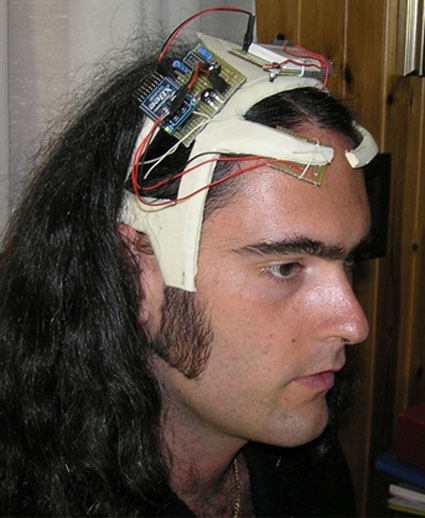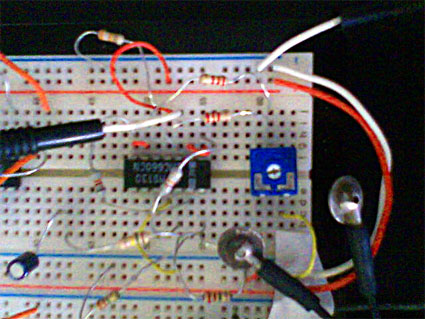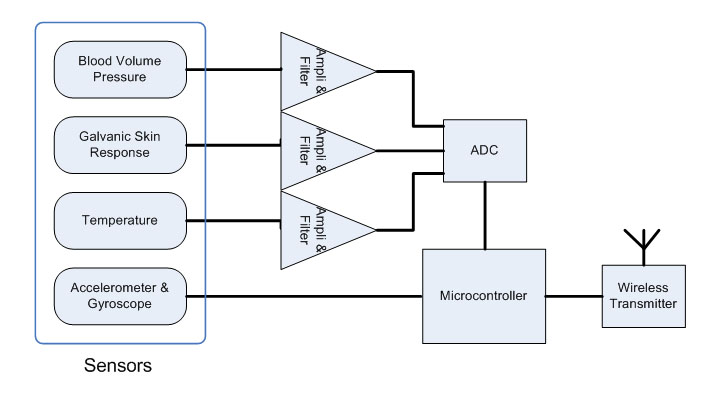Wireless Affective Devices
Contents
Part 1: project profile
Project name
Wireless Affective Devices (before 2008/10/30 only Affective Device)
Project short description
This project aims the development of devices for biological signals acquisition that can be used for Affective computing applications.
Dates
Start date: 2008/01/08
Preliminary release end: 2008/08/08
End date: Unknown (WIP)
Internet site(s)
People involved
Project heads
Other Politecnico di Milano people
Students currently working on the project
Students that have worked on the project
- Mattia Colombo (Blood Volume Pressure sensor)
- Alessia Cornaggia (Galvanic skin response sensor)
- Sala Mirko (Galvanic skin response sensor)
Laboratory work and risk analysis
Laboratory work for this project will be mainly performed at AIRLab/Lambrate. It will include electrical and electronic activity. Potentially risky activities are the following:
- Use of mechanical tools. Standard safety measures described in Safety norms will be followed.
- Use of soldering iron. Standard safety measures described in Safety norms will be followed.
- Use of high-voltage circuits. Special gloves and a current limiter will be used.
Part 2: project description
The project is aimed at developing a device, connected to a PC, to acquire biological signals (such as GSR, BVP, Temperature and Head orientation) in a way that is less invasive for the subject. The term invasive is related to how much the sensors we use compromise the normal interaction between subject and machine. Through these biological signal the PC is able o understand emotion in people who wear the device.
An affective device should be weared easily, should not have cables and should acquire as much sensors as possible. We relax some constraint on the quality of signal but we add constraint on way they are acquired(i.e. the subject can put it on easily, the usual movements are not influenced..). The aim of the resulting device is not to replace the standard medical devices usually used to acquire that signals, but is to be much more suitable for industrial application in which the medical requirement are replaced by invasivity requirement.
It is composed by:
- Blood Volume Pressure (Preliminary release by Mattia Colombo)
- Galvanic Skin Response (Preliminary release by Sala Mirko e Alessia Cornaggia)
- Temperature
- Accelerometer
- Gyroscope
- Wireless comunication with a PC
- Low power, high efficiency, battery power section
Part 2.1: just done in preliminary release
Here is a preliminary release of the headset produced before 2008/08/08
If you are interested on the making of the headset please see making rubber models
* Blood Volume pressure
First graph showing a signal acquired with the wireless sensor.

* Skin galvanic response (Sala Mirko e Alessia Cornaggia[1]) Galvanic skin response (GSR), also known as electrodermal response (EDR), psychogalvanic reflex (PGR), or skin conductance response (SCR), is a method of measuring the electrical resistance of the skin. There is a relationship between sympathetic activity and emotional arousal, although one cannot identify the specific emotion being elicited. The GSR is highly sensitive to emotions in some people. Fear, anger, startle response, orienting response and sexual feelings are all among the emotions which may produce similar GSR responses. Response of the skin to the passage of a small electric current. The ease with which the current flows between two points on the skin can be used to indicate stress. When a person is tense or emotional, the sweat glands become more active, increasing moisture on the skin; this allows the electric current to flow more readily. The response may also be used in relaxation training: information about the galvanic skin response is fed back aurally or visually to the subject who can, with practice, learn to increase or decrease sweating on the skin by learning to relax or tense muscles. We measure the galvanic skin response using two electrodes attached to the skin. The optimal placement is the palm of the hands, but we are experimenting other places like on the forehead. The circuit we are creating is the one below.
Part 2.2: re-definition of the complete work
This is a simplified schematic block diagram of the complete object:
NOTE:
- In schematic is not present Power Supply Module: it will be based on a rechargeable Li-ion battery. It must satisfy requirements of high efficiency, logn life and low weight.
- ADC and Microcontroller could be unified using a microcontroller with internal ADC and internal or external multiplexer to select lines.
- Wireless section could be implemeted in Bluetooth (instead of using a XBee module like in preliminary release) due to it's diffusion in cellular phones, notebooks, MP3 reader... without necessity of external modules.
About Sensors:
BVP will be acquire by an IR transmitter-receiver measuring light reflected from skin. Particular attention will be put on position, geometry and power absorption of this stage.
GSR will be acquiret by a couple of electrodes forcing a low current (or voltage) and reading voltage (or current) through electrodes. Particular attention will be put on electrodes position and material. In addition is possible to foresee some problems in amplifier stage due to large range of skin resistance. Problem consist in chosing a correct amplification to overwork ADC full scale with a signal affected by little variation but huge possible range.
Temperature will be acquired by thermocouple or PTC/NTC. Slowly variable signal, possible problems with noise due to resolution required.
Head orientation will be acquired by an accelerometer and a gyroscope, problably integrated in the same chip. Two possibilities: analog output (need to digitalize up to six line) or digital output (like displaied in schematic block diagram).
To define in detail electronic specifications and requirements it's necessary a preliminary research/study (in literature and web) about state of art of sensor type used to monitor each type of biological signals we are interested about.
In this way it's possible both understand problematics related to interaction between biological and electonical worlds and improve or re-desig existing prototype.


